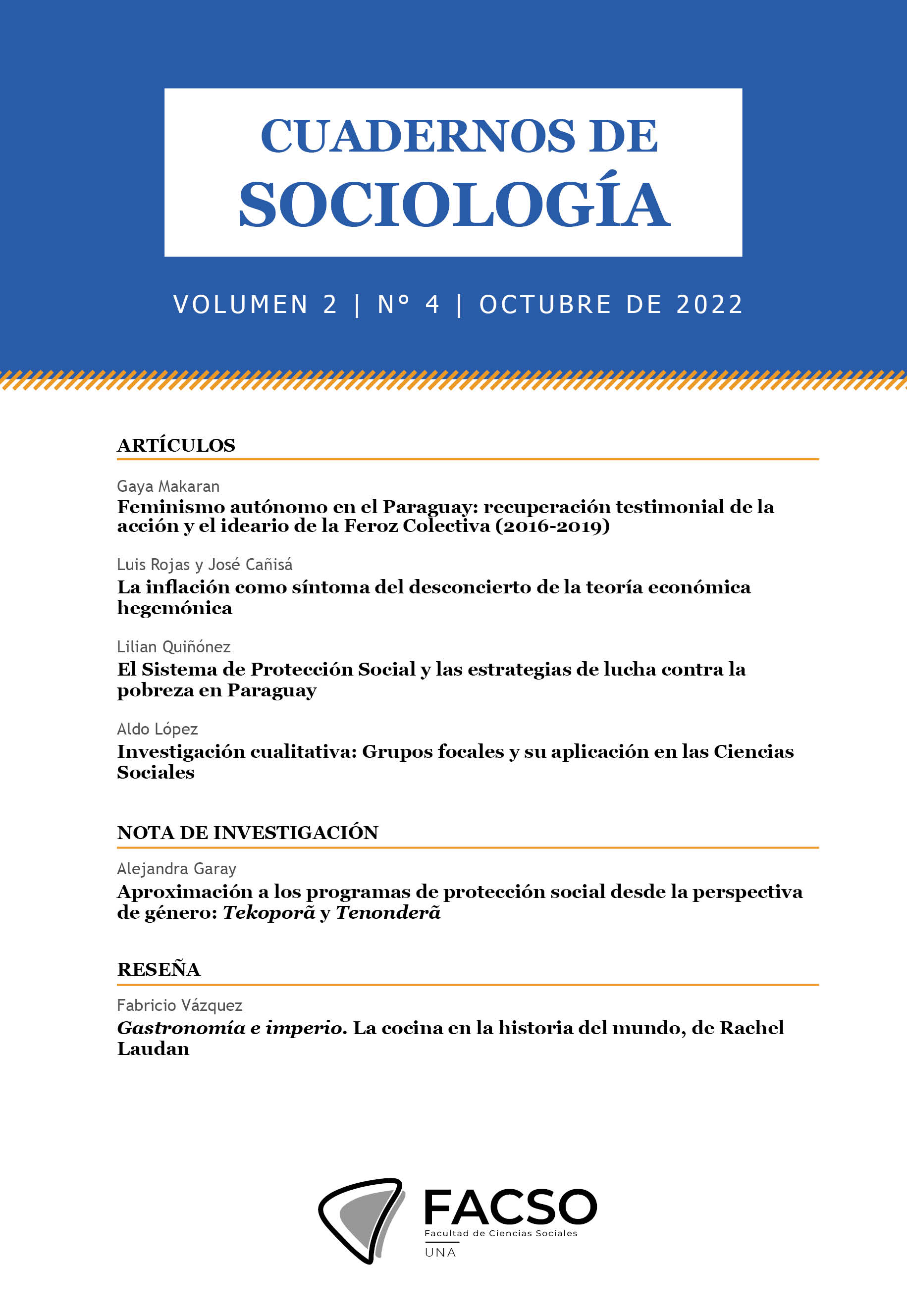Inflation as a symptom of the confusion of the hegemonic economic theory
DOI:
https://doi.org/10.54549/cs.2022.2.4.4537Keywords:
Inflation, Crisis, Economic Theory, World Economy, ParaguayAbstract
Given the constant increase in the general level of prices in the world
economy and in the national economy, an analysis of the causes that have
generated these inflationary processes is presented. For this, we initially
make a description of the theoretical approaches that try to explain inflation,
grouping them into major economic currents: the monetarist, the Keynesian,
the Marxist and the structuralist. Based on them, we propose the analysis of
the inflationary process in development since 2021 and its causes, starting
from the deep crisis of the world economy that began in 2008, which lasts
until 2022, the year that adds the war and the sanctions imposed. By the
US and the EU to Russia. Finally, we carry out an analysis of the current
inflationary situation in Paraguay, which has a multi-causal and structural
origin, because of a primary export model, energy dependence on external
hydrocarbons, low industrialization, neoliberal and adjustment policies,
and the oligopolistic markets with speculative components.
Downloads
Metrics
References
Arrizabalo, X. (2014). Capitalismo y economía mundial. Madrid: Instituto de Economía Marxista.
Banco Central del Paraguay. (2022). Informe de inflación. Asunción: BCP.
Banco Mundial (2022). Crecimiento de la masa monetaria (% anual). Recuperado de: https://datos.bancomundial.org/indicator/FM.LBL.BMNY.ZG?locations=PY
De la Vega, J. (1991). Diccionario Consultor de Economía. Buenos Aires:Editorial Delma.
Del Rosal, M. (2019). Una crítica de la economía política del Banco Central Europeo. Papeles de Europa, 32(1), 13-27. Recuperado de: https://revistas.ucm.es/index.php/PADE/article/view/64469
Gambina, J. (2022). Inflación y política antiinflacionaria. FISYP.
Gudynas, E. (2022). Muy lejos está cerca. Los efectos de la guerra en Ucrania sobre el comercio global, energía y recursos naturales latinoamericanos. Lima: RegGE.
Instituto Nacional de Estadística (INE). (2022). Boletín trimestral de empleo. EPHC. Fernando de la Mora: INE.
Keynes, J. M. (1997). Teoría General de la ocupación, el interés y el dinero. México: Fondo de Cultura Económica.
Ministerio de Agricultura y Ganadería (MAG). (2022). Síntesis estadística 2020-2021. Asunción: MAG.
Organización de Naciones Unidas para la Agricultura y la Alimentación (FAO). (2021). El estado de la seguridad alimentaria y nutrición en el mundo. FAO.
Rojas, L. (2021). La agonía campesina bajo las botas del agronegocio y su gobierno. En Derechos Humanos Paraguay 2021. Asunción: CODEHUPY.
Rojas, L. (2022). Crisis, guerra, inflación ¿se viene el estallido? Revista Acción, (423).
Rossetti, J. P. (1985). Introducción a la Economía. Enfoque Latinoamericano. México: Harla.
Santarcángelo, J. (2010). La inflación en la Argentina en el siglo XXI: debates teóricos y evidencia empírica. En: Ensayos de Economía, N° 36, pp. 45-67. Medellín: UNAL.
Servicio Nacional de Calidad y Sanidad Vegetal y de Semillas. (2022). Informe de Gestión 2021. Asunción: SENAVE.
Sociedad de Economía Política del Paraguay. (2022). Política económica de la desigualdad. Asunción: SEPPY.












